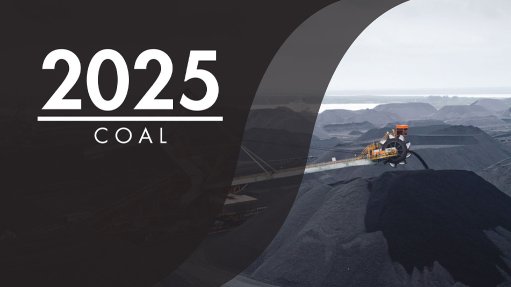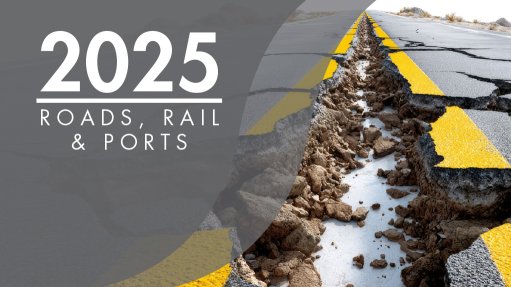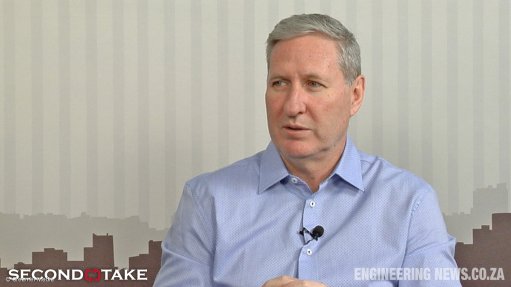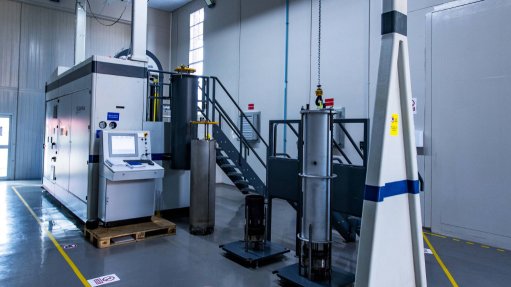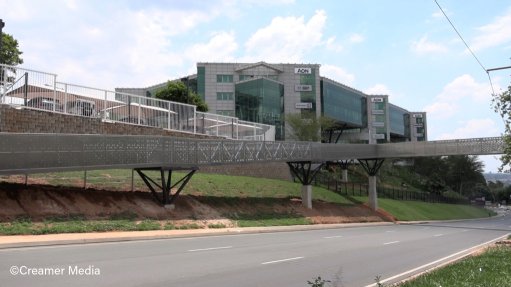Global steel demand to be flat in 2025 while 2026 set for growth – worldsteel
Industry association the World Steel Association (worldsteel) projects global steel demand to be flat at about 1.75-million tonnes this year, compared with 2024.
Demand is, however, expected to grow by a modest 1.3% to 1.77-million tonnes in 2026.
The organisation is cautiously optimistic that global steel demand will bottom-out this year and demonstrate moderate growth in 2026, despite an escalation in global trade uncertainties.
This positive outlook is underpinned by the demonstrated resilience of the global economy, continued strength in public infrastructure investments in most major economies of the world, and the expected ease in financing conditions, it says.
The projected growth in 2026 is driven by a mix of regional trends, with worldsteel expecting to see a slowdown in the decline of steel demand from China, coupled with strong growth in developing economies such as India, Vietnam, Egypt and Saudi Arabia.
It also anticipates the return of steel demand growth in Europe, it notes.
However, the global manufacturing sector continues to face a squeeze from elevated production costs and sustained affordability pressures on consumers.
Additionally, escalating trade tensions are having a direct, negative impact on steel demand in economies heavily reliant on the export of steel-intensive goods, such as machinery and automotive components.
Geopolitical uncertainties act as a major deterrent by chilling consumer and investor confidence, and dampening steel demand across key markets, worldsteel says in its October 2025 Short Range Outlook.
Meanwhile, China’s steel demand will continue to decline by about 2% this year. This forecast represents a moderation of the downward trend observed since 2021, which is driven primarily by the ongoing downturn in the housing market.
In 2026, the decline in China is projected to further decelerate by 1% as the housing market bottoms out.
However, the risks to the association's current China steel demand outlook are skewed towards the downside and a tougher global trade environment poses a significant downside risk, potentially slowing steel demand from the manufacturing sector.
Additionally, lingering financial pressures on local governments in China could constrain infrastructure investments and further dampen demand.
Steel demand in the developing world excluding China is forecast for robust growth, with a 3.4% increase this year and a 4.7% increase in 2026. This expansion is primarily driven by strong performance in India, and some Southeast Asian countries, and some Middle Eastern and North African countries.
In India, the association’s projections suggest that steel demand will continue to grow strongly, with about 9% growth in its steel demand projected over 2025 and 2026, driven by continued growth in all steel-using sectors.
In 2026, steel demand in India is projected to be almost 75-million tonnes higher than in 2020, worldsteel adds.
While steel demand in Africa has remained largely flat for nearly a decade, hovering around the 35-million- to 40-million-tonne mark, a significant shift has been underway since 2023, with clear indicators of a strong resurgence in construction and steel consumption across the continent.
“Our analysis estimates that, over the past three years, Africa’s steel demand has grown by an average of 5.5% a year, fuelled particularly by robust activity in the Northern and Eastern regions. This renewed momentum, which brought Africa’s steel demand to about 41-million tonnes in 2025, is underpinned by improving macroeconomic fundamentals and governance.”
For example, most of Africa’s major economies have recently achieved greater stability, seeing a noticeable reduction in volatility across inflation and exchange rates, worldsteel says.
Additionally, several African nations are actively pursuing ambitious economic diversification agendas that are supported by key reforms. These developments might be paving the way for a potentially sustained period of steel demand growth in the continent, it notes.
In Central and South America, worldsteel anticipates a relatively strong 5.5% growth in steel demand this year. This projected expansion is primarily driven by a double-digit rebound in Argentina, which is recovering from a large 30% decline in 2024, and 5% growth in Brazil, where government-supported social housing initiatives continue to bolster construction steel consumption.
This forecast of 5.5% growth is expected to push the region’s total steel demand to about 50-million tonnes, but this is two-million tonnes lower than the consumption recorded in 2013.
“This clearly reflects the persistent deindustrialisation trend that has marked the region’s economic trajectory since the early 2000s,” the organisation notes.
In the developed world, steel demand is forecast to experience a 0.5% decrease this year, which is the fourth consecutive year of decline since 2021.
However, a recovery is anticipated in 2026, with projected growth of 1.5% as steel demand in the EU and US is expected to bottom out this year and post modest growth thereafter.
Conversely, steel demand in Japan and Korea is projected to remain subdued throughout 2026, worldsteel says.
In the EU and UK region, the association expects steel demand to grow 1.3% this year and 3.2% in 2026.
The long-awaited return of steel demand growth in the EU reflects the impact of increased infrastructure and defence spending in combination with improving macroeconomic conditions, such as lower inflation, easing credit conditions and improvements in real household income, it says.
Further, steel demand in the US is expected to rebound by 1.8% this year owing to front-loading of production ahead of increased tariffs and continued growth in infrastructure spending.
In 2026, worldsteel expects steel demand in the US to grow by 1.8%, aided by pent-up demand in residential construction and private investment, easing financing conditions and reduced uncertainty.
Additional upside could come from the launch of stimulus packages, which may boost multiple sectors, the organisation adds.
Article Enquiry
Email Article
Save Article
Feedback
To advertise email advertising@creamermedia.co.za or click here
Comments
Press Office
Announcements
What's On
Subscribe to improve your user experience...
Option 1 (equivalent of R125 a month):
Receive a weekly copy of Creamer Media's Engineering News & Mining Weekly magazine
(print copy for those in South Africa and e-magazine for those outside of South Africa)
Receive daily email newsletters
Access to full search results
Access archive of magazine back copies
Access to Projects in Progress
Access to ONE Research Report of your choice in PDF format
Option 2 (equivalent of R375 a month):
All benefits from Option 1
PLUS
Access to Creamer Media's Research Channel Africa for ALL Research Reports, in PDF format, on various industrial and mining sectors
including Electricity; Water; Energy Transition; Hydrogen; Roads, Rail and Ports; Coal; Gold; Platinum; Battery Metals; etc.
Already a subscriber?
Forgotten your password?
Receive weekly copy of Creamer Media's Engineering News & Mining Weekly magazine (print copy for those in South Africa and e-magazine for those outside of South Africa)
➕
Recieve daily email newsletters
➕
Access to full search results
➕
Access archive of magazine back copies
➕
Access to Projects in Progress
➕
Access to ONE Research Report of your choice in PDF format
RESEARCH CHANNEL AFRICA
R4500 (equivalent of R375 a month)
SUBSCRIBEAll benefits from Option 1
➕
Access to Creamer Media's Research Channel Africa for ALL Research Reports on various industrial and mining sectors, in PDF format, including on:
Electricity
➕
Water
➕
Energy Transition
➕
Hydrogen
➕
Roads, Rail and Ports
➕
Coal
➕
Gold
➕
Platinum
➕
Battery Metals
➕
etc.
Receive all benefits from Option 1 or Option 2 delivered to numerous people at your company
➕
Multiple User names and Passwords for simultaneous log-ins
➕
Intranet integration access to all in your organisation




